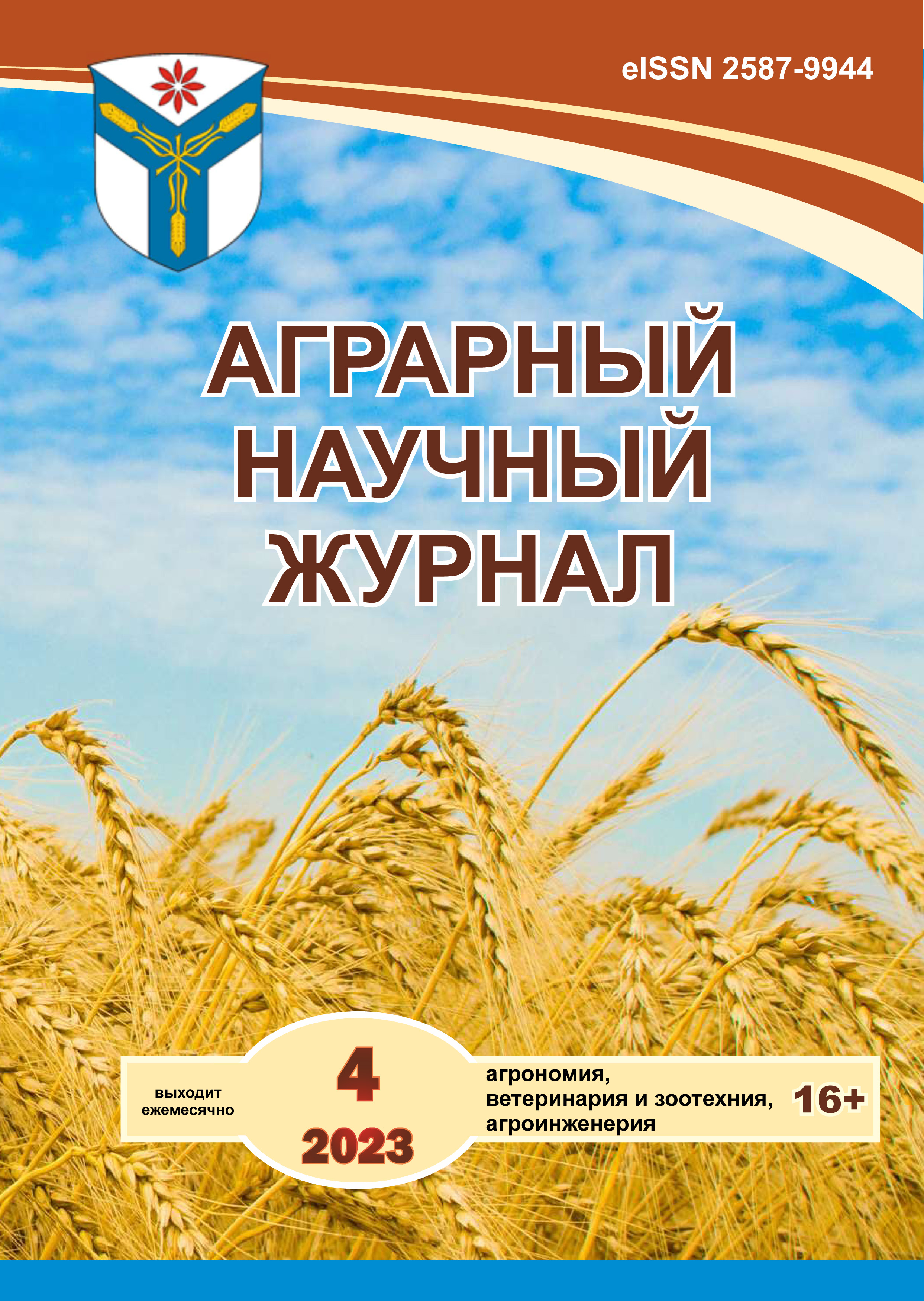Evaluation of methods for overretained afterbirth expulsion in cows
DOI:
https://doi.org/10.28983/asj.y2023i4pp81-84Keywords:
uteroton, metrostim, enroflon, retention of the placenta, endometritisAbstract
The article presents the results of the overretained afterbirth expulsion in cows. It was found out that retention of placenta is recorded in 39.04% of cows. Most often, incomplete retention of placenta was noted in 36.98%, and complete one in 2.05%. The efficiency of afterbirth expulsion with uteroton was 58.82%, with metrostim and metrostim in combination with enroflon - 64.71%. Fertility of cows turned out to be the highest after intramuscular use of metrostim in combination with intrauterine administration of enroflon (76.47%) with the best insemination index (1.6±0.01). According to experimental studies, for a conservative method of overretained afterbirth expulsion in cows, it is advisable to use a myotropic drug in combination with a drug that has a bactericidal effect on the microflora of the uterine cavity. This helps to accelerate the involution of the uterus, increase fertility and prevent the occurrence of various forms of endometritis.
Downloads
References
Мадисон В. Задержание последа – предложений много, загадка остается // Молочное и мясное скотоводство. 2004. № 1. C. 13–15.
Медведев Г. Ф., Гавриченко Н. И., Долин И. А. Репродуктивная способность и частота выбраковки коров с заболеваниями метритного комплекса и функциональными расстройствами яичников // Актуальные проблемы интенсивного развития животноводства. Горки : БГСХА, 2014. Вып. 17. Ч. 2. С. 281–290.
Медведев, Г. Ф., Гавриченко Н. И., Бегунов В. С. Этиология и лечение задержания последа у коров // Проблемы акушерско-гинекологической патологии и воспроизводства сельскохозяйственных животных: материалы Междунар. науч.-практ. конф., посвящ. 100-летию А.П. Студенцова; Казанская академия ветеринарной медицины им. Н. Э. Баумана. Казань, 2003. Ч. 2. С. 11–17.
Медведев Г. Ф., Гавриченко Н. И., Экхор О. Т. Эффективность использования импортных и отечественных препаратов при лечении коров с заболеваниями метритного комплекса // Проблемы акушерско-гинекологической патологии и воспроизводства сельскохозяйственных животных: материалы Междунар. науч.-практ. конф., посвящ. 100-летию А.П. Студенцова; Казанская академия ветеринарной медицины им. Н. Э. Баумана. Казань, 2003. Ч. 2. С. 18–22.
McDonald L. E., Mc Nutt S. H., Nichols R. E. Retained placenta-experimental production and precaution // Am. J. Vet. Res. 1954. P. 15–22.
Retained fetal membranes in large animals // The Merck Veterinary Manual. 2003. P. 74–79.
Geoffrey. H. Veterinary Reproduction & Obstetrics. Seventh Edition. 1996. W.B. Saunders Company Ltd. 726 p.
Noakes E., Timothy J. Parkinson, Gary C. W. Veterinary Reproduction and Obstetrics . England. 2009. W.B. Saunders Elsevier. Ltd. 950. Р. 418–425.
Downloads
Published
Issue
Section
License
Copyright (c) 2023 The Agrarian Scientific Journal

This work is licensed under a Creative Commons Attribution-NonCommercial-NoDerivatives 4.0 International License.








